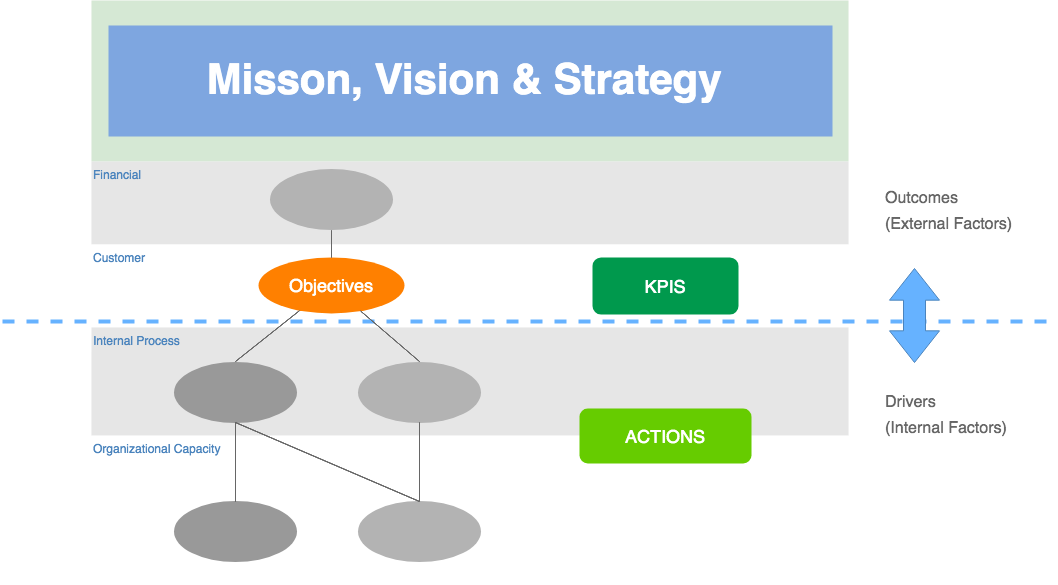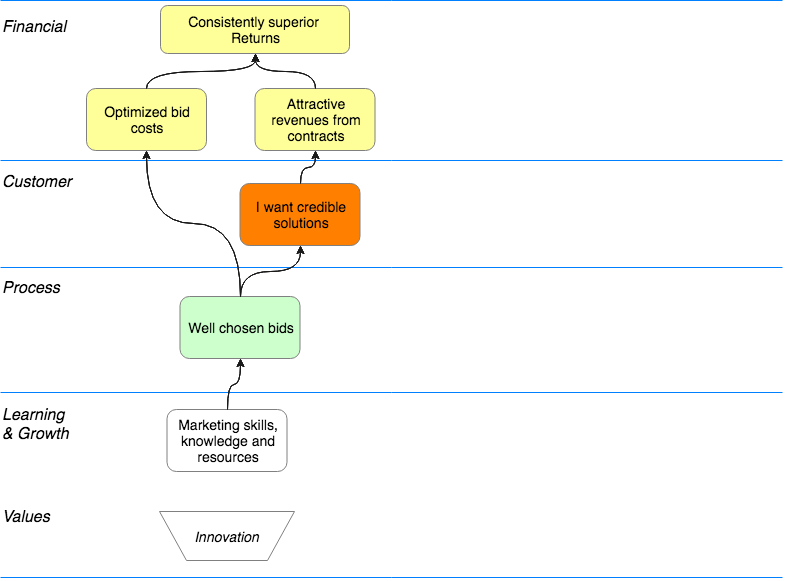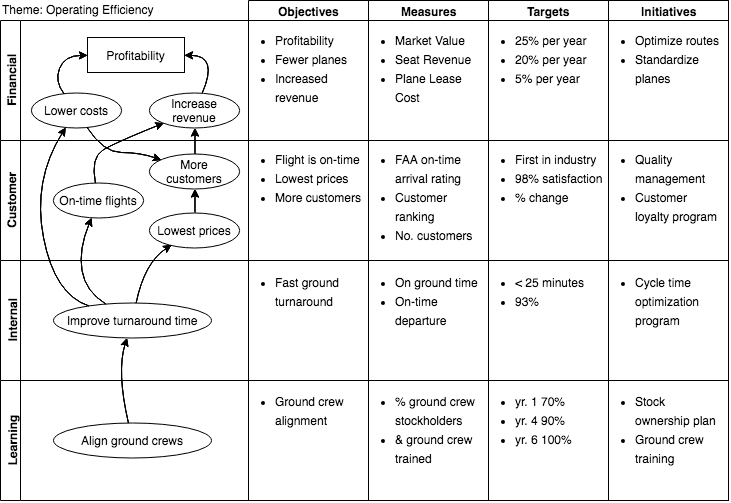A strategy map is a diagram that is used to document the primary strategic goals being pursued by an organization or management team developed by Robert S. Kaplan and David P. Norton in 1996. A strategy map is typically an element of the documentation associated with the Balanced Scorecard by translating strategy into actions that models the relationship between the drivers and the desired outcomes. Strategy Map can help us to:
- Increase focus on strategy and results
- Improve organizational performance by measuring what matters
- Align the work people do on a day-to-day basis with strategy
- Focus on the drivers of future performance
- Improve communication of the organization’s Vision and Strategy
- Prioritize action items in the implementation roadmap in tough economic times
4 Perspectives in Balanced Scorecard – Drivers and Desired Outcomes
Balanced Scorecard proposed a simple design method for choosing the content of the Balanced Scorecard based on answers to four generic questions about the strategy to be pursued by the organization. The Balanced Scorecard These four Performance Measure questions:
- To satisfy stakeholders, what financial objectives must be accomplished?
- To achieve the financial objectives, what customer need must be met?
- To satisfy customers, and stakeholders, which internal organizational process are critical?
- To achieve goals, how must the individuals be enabled?

The Balanced Scorecard is a framework that is used to help in the design and implementation of strategic performance management tools within organizations. One of the big challenges faced in the design of Balanced Scorecard-based performance management systems is deciding what activities and outcomes to monitor.
A Strategy Map describes your strategy and tells your story of your strategy. It shows, visually, how you expect to create value in the organization for your customers. It describes what you believe will drive change by providing a simple visual representation of the strategic objectives to be focused on in the form of the perspectives and causal arrows. The strategy map has been found useful in enabling discussion within a management team about what objectives to choose, and subsequently to support discussion of the actual performance achieved. We can develop a strategy map based on the following steps:
- It is an underlying framework of horizontal perspectives arranged in a cause and effect relationship, typically Financial, Customer, Process and Learning & Growth
- Objectives within those perspectives. Each objective as text appearing within a shape (usually an oval or rectangle). Relatively few objectives (usually fewer than 20)
- Vertical sets of linked objectives that span the perspectives. These are called strategic themes.
- Clear cause-and-effect relationships between these objectives, across the perspectives.
- The strategic themes represent hypotheses about how the strategy will bring about change to the outcomes of the organization.

Combining the Power of Strategy Map and Balanced Scorecard
A Strategy Map does not contain measures, it contains objectives. Of cause, we can combine the power of both tools by using a strategy map as a part of the Balanced Scorecard. We can place your measures on the strategy map, alongside the objectives they correspond with:

Strategy maps provide the means of linking the objectives to the balanced scorecard which provides a roadmap giving direction and linking the performance indicators and initiatives to the strategy of the company. As shown in the diagram above for each perspective, there is a set of objectives. Measures within the scorecard framework are aligned to the objectives and targets set. An action plan is linked to the objectives and along with an associated budget.